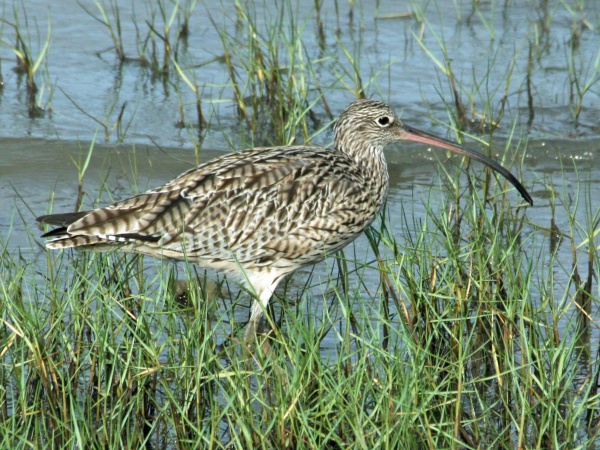Facts About Eastern Curlew
The Far Eastern curlew is a large shorebird, resembling the long-billed curlew but slightly larger. Its predominantly brown plumage and plain brown underwings distinguish it from other curlew species. This bird holds the title of the largest curlew and is potentially the largest sandpiper in the world. It measures between 60 to 66 cm in length and has a wingspan of about 110 cm. Weighing between 565 to 1,150 grams, it is comparable in size to the Eurasian curlew. One of its most distinctive features is its lengthy bill, which ranges from 12.8 to 20.1 cm.
During the breeding season, the Far Eastern curlew inhabits northeastern Asia, extending from Siberia to Kamchatka and Mongolia, favoring marshy wetlands and lakeshores. In winter, most of these birds migrate to coastal Australia, while some travel to South Korea, Thailand, the Philippines, and New Zealand. They typically settle in estuaries, beaches, and salt marshes. The Yellow Sea serves as a common migration route for them.
The Far Eastern curlew primarily feeds on invertebrates found in the mud, using its long, curved bill to forage. Although it can feed alone, it often forms large flocks during migration and roosting periods. Its call is a distinctive clear whistle, sounding like "cuuue-reee" which is often repeated.
As of 2006, the global population of Far Eastern curlews was estimated to be around 38,000. Initially, the IUCN classified it as a species of least concern, underestimating its rarity. By 2010, the IUCN updated its status to "vulnerable." In Australia, the bird is considered "critically endangered" under the Environment Protection and Biodiversity Conservation Act.
The Far Eastern curlew's scientific journey began in 1760 when French zoologist Mathurin Jacques Brisson described it in his work, Ornithologie. However, Brisson's Latin names were not accepted under the binomial system. It wasn't until 1766 that Swedish naturalist Carl Linnaeus included the bird in the twelfth edition of Systema Naturae, naming it Scolopax madagascariensis.
